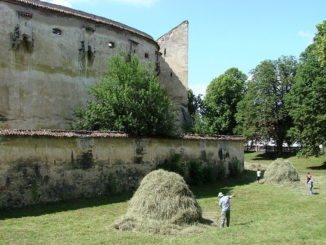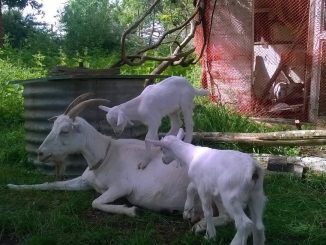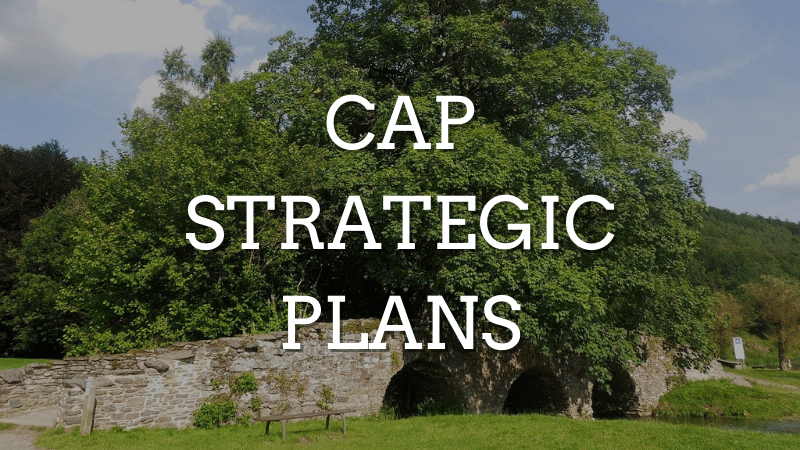
By Mathieu Willard and Matteo Metta
While one third of Member States missed the deadline for submitting national strategic plans for the CAP (CSP), we find Belgium (comprising Wallonia and Flanders), still seemingly bogged down in the last details of the CSP, trying not to set yet another record in negotiation length. Will Wallonia ask again for a derogation on coupled livestock support, and how will the eco-scheme on extensive grazing fare with more coupled money into livestock? While expectations are high on many elements of the CSP (stakeholder inclusion, transparency, fairness, sectoral support), it doesn’t seem like Wallonia will submit any time soon, with Mihaill Dumitru, Deputy Director-General for Agriculture and Rural Development, pointing to Belgian tardiness as one of the more worrisome. So what is taking so long? What do we already know from the negotiations that took place – what kind of CSP will eventually emerge?
The article’s roadmap
This article intends to shed some light on the bumpy road that led to Wallonia’s not yet finalised CSP. Focussing first on understanding the delays, we’ll then expose how an originally inclusive debate has lowered itself to the level of their neighbour’s. Finally, we’ll take a look at the decision taken on coupled payments for livestock, what it implies in terms of economic sustainability and try to understand if this decision can be balanced by eco-schemes intervention.
The time-scape of CSPs
Time is a political variable in the new strategic approach to CAP post-2022. Before talking about the late submission from Wallonia (Belgium), let’s take a wider look. Taking more time to submit the CSP can be beneficial: for example by accommodating more progressive reforms, or reducing risks of delay, by assessing how the Commission is dealing with other countries’ submissions. On the contrary, using the ‘punctuality’ argument is not per se a good thing, as some Member States used it to justify status-quo decisions or skip debates on more controversial chapters of the CSPs (e.g. allocating only 10% of direct payments to redistributive payments, but removing total capping above 500,000.00 Euro/year for very large beneficiaries in Italy).
National members of COPA-COGECA have had a major say along the design of the CSPs. For them and national ministries, any delays in submission and approval are a source of concern, which is expressed by using the arguments that farmers all around Europe are hoping for a clear picture of the future rules as soon as possible. But it already seems that the indicative timeline will not be respected, at least not for all the Member States. Thousands of pages are being screened by the Commission interservice consultations to ensure that the CSPs are legally compliant and present real reforms in both Pillar I and II. Add the delays from some Member States to this equation and you can be sure that the process will take much longer than European farmers would hope. While Christiane Lambert, President of COPA, has indicated that the end of spring should be the target date for a clear establishment of the rules, Mihail Dumitru of DG AGRI stated that he believed September is a more realistic date and that he didn’t foresee a CSP adopted before summer.
He explained that the priority was “to check if all legal requirements of the regulation were complied with”, as well as “assessing the ten specific objectives of the CAP, covering environmental, economic and social aspects of sustainability”, adding that only “close to half” of the CSPs delivered were complete, including complete or partial annexes with European Green Deal targets. Concerning the content of the CSPs, organic farming seems to be addressed the most while “information on rural areas, coordination with other EU & national funding, for instance addressing antimicrobial resistance” were not.
Finally, time is also a political variable for the Commission. Besides its legal duty, DG – AGRI needs to demonstrate that the ambition and the strategic orientation of the CSPs are seriously appraised in detail. However, this does not necessarily guarantee that red lines will not be crossed, that the weakest areas are addressed, or that CSPs can receive a “greener and fairer stamp” until they incorporate the necessary changes. With the Commission’s observation letters being foreseen for the end of March, the road is still long before final approval.
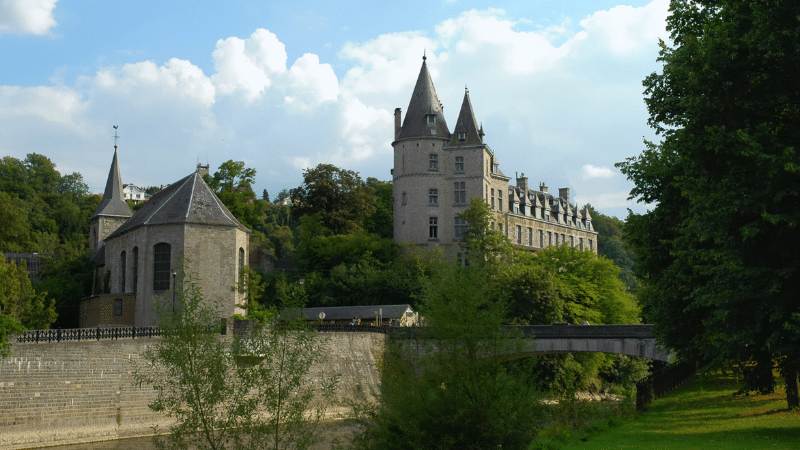
Belgium and Wallonia: the art of compromise
Let’s go back to the Belgian case. If one thing is certain, it is that Belgium is one of a kind. For one thing, it is the only country in all of the Union that will present not one but two CSPs, each region having developed its own. In this article, we will focus on Wallonia, who proudly presented a resume of its CSP on the 17th of January 2022. The CSP was praised by the government on all parts, describing it as well-balanced and sustainable. This publicity stunt seems a bit hypocritical when you know that European deputies from two of the three political parties composing the Walloon government (Socialist Party and Ecologist Party) had voted against the adopted Regulation, (EU) No. 2021/2115, back in November 2021. The reality is that behind this seemingly united government, there have been many disagreements and long, heated debates. It is no surprise when you look at its composition. It was formed from a majority including parties with very different visions (Liberals, Ecologists and Socialists), with liberals being in charge of the Ministry of Agriculture, and the ecologists directing the Ministry of Environment. And this mixed aspect of Belgian political life might explain why the CSP is still incomplete.
At the end of December, Liberals and Ecologists were still arguing on the fundamentals of the CSP. On one side, Céline Tellier, the Walloon Minister for the Environment, was calling for the support of peasant agriculture which is “greener, family-oriented, and more adapted to the development of short supply chains”, insisting that the plan should largely support organic farming, extensive livestock breeding and a drastic reduction of chemical inputs. On the other side, Willy Borsus, the Walloon Minister for Agriculture, feared that such a plan would imply the destruction of a model (read conventional and industrial), many job losses, and the development of an agrarian system where production would be incidental. This arm-wrestling match was happening only three weeks before the presentation of the CSP, on the 17th of January 2022. It is then not surprising that, one month later, no CSP has been officially submitted to the European authorities. All that has been publicly published are the 44 slides from the presentation and even those are incomplete, with, for example, no information on the details of eco-scheme “reduction of industrial inputs”.
While some outsiders may be surprised that Wallonia is behind schedule, Belgian people are not. Europe is just witnessing what Belgians are very used to: the politics of compromise.
So, where are we, and what is yet to come before the long overdue submission of the CSP? Well, the Commission expect the Walloon government to take a final position on the post-2022 CAP. The CSP will then be submitted for public consultation. For a successful public consultation, all the stakeholders, agricultural unions, environmental organisations and civil society must have had the time to assess the final draft CSP, which is incredibly technical and requires a lot of time to be analysed in depth.
Inclusion and transparency, a priority lost on the way
As stated in article 106 of the regulation establishing the rules for the elaboration of the CSPs (EU 2021/2115), concerning procedural requirements, each Member State had to organise partnerships with competent authorities, including representatives of the agricultural sector and relevant bodies representing civil societies. It was therefore surprising to read a letter from five environmental organisations reunited under the Coalition Impaacte and one agricultural union (UNAB) questioning minister Borsus, vice president of Wallonia and minister of agriculture, about their exclusion from the negotiations, and requesting an immediate access to the CSP in progress. As they explained in their open letter, they were initially included in the Walloon CAP consultations until May 2021. Although formally part of the committee accompanying a modelling exercise to simulate the implications of different policy decisions on the budget allocation among beneficiaries, they have since been excluded with no explanation. This situation is all the more surprising when we know that the Walloon government facilitated an inclusive consultation process until then, including UNAB and Impaacte in around 35 technical meetings on the elaboration of the Walloon CSP.
Having received no response to their request, they shared their concerns in a letter to the EU’s Agriculture Commissioner Janusz Wojciechowski, to which they received an answer. “Following your letter of 10 December 2021, I would like to reiterate the commitment of the European Commission to the importance of building partnerships with stakeholders and consultations with them on the CAP strategic plan in each Member State. This is an issue I have regularly emphasised in Council meetings, and it is also an important requirement for preparation of the CAP strategic plan. Concerning Wallonia, the Commission is looking forward to receiving the Walloon plan as soon as possible. I trust that the authorities in Wallonia will ensure that the appropriate consultation of stakeholders as well as the strategic environmental assessment and the ex-ante evaluation takes place”.
This may be a fairly generic answer that doesn’t say much. But the Commission will have to address issues like stakeholder exclusion when publishing the observation letter to the submitted CSPs. The way the Commission evaluates the importance of an inclusive and transparent process will send a strong signal to decision makers regarding the need to improve in future negotiations. The fact that many organisations across Europe reported difficulties in accessing information on the development of their CSPs calls for necessary clarification and measures. Indeed, a report published in November from EEB, WWF and BirdLife International, trying to assess the development of eco-schemes from all Member States, has pointed out difficulties for environmental stakeholders across Europe to access information regarding the drafts. “All in all, our EU wide search for details on draft eco-schemes has revealed important delays and deficiencies in the information made available to environmental stakeholders during this crucial phase of the design of CAP interventions. With only a few weeks left until CAP national strategic plans are submitted, it is in many cases not possible or very difficult for stakeholders to engage and provide feedback on the eco-schemes being designed by Member States. It is very likely that many of these eco-schemes will be submitted to the European Commission without sufficient prior public participation and feedback, a limitation that should be taken into account during the assessment and approval process.”
If the ex-ante evaluations and strategic environmental assessment will most probably never be shared before final submission, there is one crucial report conspicuous by its absence. This report, called “Support for the design and implementation of the post-2020 CAP Strategic Plan” was produced by the consultancy firm ADE in partnership with ULiège and Gembloux Agro-Bio Tech and finalised many months ago. It compares different reform scenarios, in terms of aid that will be received by each beneficiaries and overall agricultural income of farms. This study contains the most complete and most recent quantified evaluation at Walloon level and provides the tools to estimate the economic impact of a scenario. The results are analysed by agricultural region, technical-economic sector, farm size and by economic dimension, providing thus the possibility to identify the winners and losers in each scenarios. This report has yet to be published publicly, which is a pity for it might shed light on what could be considered one of the most important decisions in Wallonia’s CSP. This is the proposition to renew the derogation for coupled support to livestock breeding.
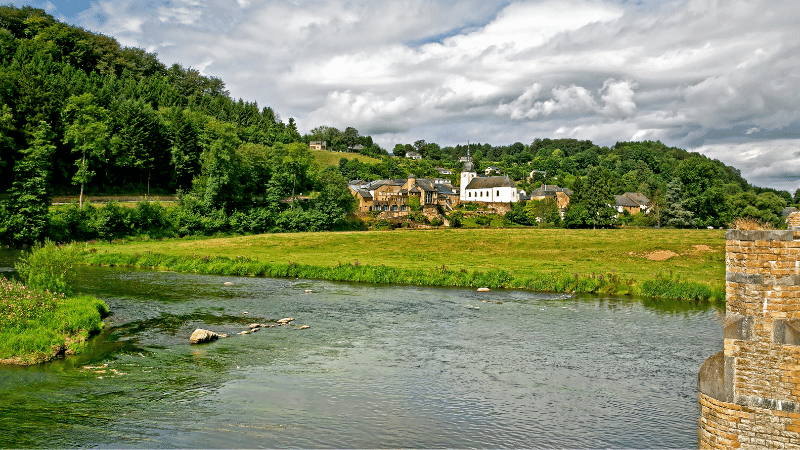
The Belgian blanc bleu in the living room
Among all the new measures introduced, many deserve some attention. For example, five eco-schemes have been presented, with a dedicated budget of 26% of Pillar I (environment-friendly culture; winter soil coverage; permanent grassland; ecological gridding; reduction of chemical inputs). Other envelopes from Pillar I and II have been raised with, notably, an increased budget for redistributive payments, for the support of young farmers and for organic production. Reactions to the CSP have so far been mixed, with the main agricultural unions welcoming a CSP that supports social equity and takes a good step towards sustainability, and environmental NGOs also welcoming some long-awaited changes (such as an increased support for young farmers and the strengthening of the redistributive payment) but mostly criticising a CSP that maintains the status-quo. It is however the analyses on the part of the CSP tackling coupled support where we see the most dissonance.
The decision to be taken on coupled support for livestock farmers has heated the debates throughout the whole negotiation process. And even though a complete analyses of the main components of the CSP concerning fairness and environmental impact should wait for the final CSP to be published, it is interesting to give a quick look at this measure that embodies a certain socio-environmental duality and exemplifies the way in which it can sometimes seem difficult to combine social equity with environmental goals.
While the EU legislation limits the financial allocation for coupled income to 13% of direct payments, specifically in Article 96(1) of Regulation (EU) No 2021/2115, the Walloon government proposes to renew the derogation already obtained on the previous CAP, with 21,3% of the EAGF budget being allocated to coupled aids. This budget will mostly be used to support meat cattle farmers to whom 18% of the subsidies are dedicated. This raises some questions. For example, how can this subsidy potentially distort the market in which livestock breeders from other Member States also have to participate? And are those subsidies linked to any kind of specific requirements (such as the integration or diversification of cattle species)?
Cattle farming is a central part of Wallonia’s agricultural production, with 20.5% of farms being registered in the “meat cattle” technical-economic sector and 13.5% as “mixed cattle”[1]. And it has been almost impossible for the producers in that sector to earn a fair living wage in the past years. Among all the main technical-economic sectors (including crops, milk and mixed productions), meat cattle breeders have earned only 60% of the average income in the agricultural sector of Wallonia[2]. If we look at the three-year average labour income per worker in Walloon farms (2016-2018), beef farmers are by far the lowest, with average incomes estimated at around 5,000 euros while the other sectors all exceed 13,000 euros[1].
It is therefore no surprise that the two main agricultural unions (FWA, FUGEA) were satisfied with the government’s decision to ask for a renewal of the derogation of this measure. Considering the options laid down by the European regulations, a derogation was deemed essential in order to keep the sector alive. This derogation may help to keep producer’s head out of the water for a while. However, it does not address the intrinsic price problem. Instead, it reinforces dependency on not just a subsidy, but, via derogation, an exemption from the standard rules on coupled payments. It is rather a plaster on an open wound, unlikely to support economic sustainability on the long run. This is disappointing knowing that supporting farm income and economic resilience and sustainability is the first specific objective of the European CAP regulation, as described in Article 6 (of R2021/2115). In the end, the disjointed orchestration of multiple interventions from Pillar I and II, even including coupled support, is expected to fail in addressing this challenge, as it did during the 2014-2020 period.
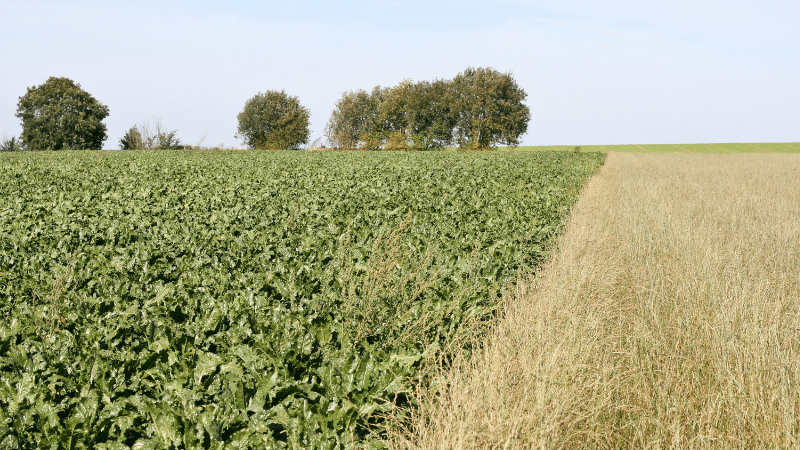
Synergies and tensions in CAP interventions
The impact of this support for livestock breeding doesn’t only have economic implications. The fourth specific objective laid down in article 6 of the CAP (R2021/2115), on which cattle farming has a huge influence, is to mitigate climate change. It is therefore not surprising that environmental NGOs were frustrated by the decision. Indeed, this proposition seems to go against the Commission’s recommendations to Belgium to reduce GHG emissions in the livestock sector and against Belgium’s commitment to reduce methane emissions by 30%, by 2030[3]. Compared to the European average of 2 kg of CO2 equivalent per hectare, Wallonia is at the forefront of European emissions from agriculture with 6.5 Kg of CO2 equivalent per hectare (caused by N2O emissions from chemical inputs and CH4 emissions from livestock)[4].
But these two legitimate objectives are not impossible to reconcile. A Research commissioned by WWF Belgium and produced by the Earth and Life Institute of UCLouvain has shown that farms that have adopted extensive farming, i.e. with a low density of animals on grassland, achieved the same economic performance as more intensive farms, with a much lower environmental impact. This is achieved by reducing the dependence of livestock on feed inputs and fertilisers, thus reducing costs.
Wallonia’s government is well aware of this and decided therefore to reduce the ceiling on the number of cattle head per farm that could benefit from the aid and, jointly, decided to introduce an eco-scheme benefiting permanent grassland in order to promote extensive farming. But when you look at the numbers from the government’s presentation, it is pretty clear that the benefit a farmer could earn from this particular eco-scheme is nowhere near the potential benefit from maximising coupled payment. On one side, the gradual subsidy linked to the permanent grassland eco-scheme foresees a farmer will earn 21 Euro/ha for a herd density of 3 head/ha and up to 71euros for a herd density of 2 heads/ha. On the other side, through coupled payments, a farmer could receive 178euros per head and per work unit in the “meat cattle” sector, by referring to the smallest of three numbers (suckling cows aged 18 to 120 months; number of calves kept for at least 3 consecutive months multiplied by 3; number of calvings multiplied by 1.33). Looking at those numbers, and knowing that the herd size in that sector averages 45 suckling cows in Wallonia[5], it is pretty clear that the potential benefits of increasing the size of the herd, which is often advised to the farmers despite many studies outlining better results for extensive farming, will outweigh the potential benefits of decreasing herd density (as expected from eco-scheme payments). Moreover, the farmers who will be impacted by the new ceiling will be very few. Considering the papacy of wages in the livestock sector and the time it takes to reorganise production, for example to improve and even achieve feed autonomy, enforcing a complete transition towards extensive farming during the 2023-2027 period would have been difficult. Nevertheless, very little of substance is being done to initiate this process.

To conclude: What’s to come
With the end of the tunnel hopefully close for Wallonia’s government, the next weeks of finalising, submitting, and negotiating the CSP with the European Commission will say more on the overall ambition on the environment and fairness elements. With most of the CSPs out in the open, we now have to look at the objectives set out by the Commission, in the three CAP regulations – as well as in their other initiatives such as the Farm to Fork strategy – and make sure these will be critically assessed and integrated in the observation letters. We also have to check if this level of subsidiarity given to the Member States is going to distort European agri-food systems.
This article exposed some of the main issues of the Wallonian CSP, namely the derogation on coupled income support, the potential tensions & synergies between couple income support and eco-schemes, the environmental strings to be attached on coupled income support, stakeholder inclusion, and more. These will need to be carefully appraised by the Commission, with the support of economic and environmental analysis, like the Strategic Environmental Assessment and the full report of the Ex-ante evaluation (a summary should be included in the Annex to the CSP).
However, many more elements of the CSP deserve in-depth attention and analyses. In order to verify the claim of a fairer and more sustainable CSP, three critical interventions should at least be considered:
- On eco-schemes : How do they differ from the mandatory rules for GAEC and what agri-environmental value do they add in order to comply with the CAP ecological objectives as well as the Green Deal objectives of mitigating climate change, protect the environment and preserve biodiversity.
- On organic production: How will the new envelope dedicated to organic production help to reach the European objective of at least 25% of agricultural areas under organic farming, as laid down in the European Organic Action Plan.
- On redistributive payments, payments for young farmers and internal convergence : Will the articulation of those three fundamental interventions allow for a fairer distribution of payments among farmers, encourage the youth towards the path of farming, limit the race for hectares and facilitate access to land.
There three areas, along with whatever is decided in the final submission on coupled payments and livestock, will define just how fair and ecological Wallonia’s CAP Strategic Plan Submission is.
[1] SPW, Evolution de l’économie agricole et horticole de la Wallonie (2020)
[2] SPW, L’agriculture wallonne en chiffres (2020)
[3] https://wwf.be/fr/le-blog/engagement-reduire-nos-emissions-de-methane-de-30-dici-2030-produire-et-consommer-moins-et
[4] https://ec.europa.eu/eurostat/statistics-explained/index.php?title=File:Aggregated_emissions_of_CH4_and_N2O_per_Utilised_Agricultural_Area_%28kilotonnes_CO2_equivalent_per_thousand_hectares%29,_2015.png#filehistor
[5] https://etat-agriculture.wallonie.be/contents/indicatorsheets/EAW-A_II_c_2-1.html
Download this article as a PDF
 This article is produced in cooperation with the
This article is produced in cooperation with the
Heinrich Böll Stiftung European Union.
More on CAP Strategic Plans
CAP, Fairness and the Merits of a Unique Beneficiary Code – Matteo Metta on Ireland’s Draft Plan
ARC Launches New Report on CAP as Member States Submit Strategic Plans
Slashing Space for Nature? Ireland Backsliding on CAP basics
Quality Schemes – Who Benefits? Central America, Coffee and the EU
Civil Society Organisations Demand Open and Ambitious Approval of CAP Plans
CAP Strategic Plans: Germany Taking Steps in the Right Direction?
CAP Strategic Plans: Support to High-Nature-Value Farming in Bulgaria
Commission’s Recommendations to CAP Strategic Plans: Glitters or Gold?
German Environment Ministry Proposals For CAP Green Architecture
CAP Performance Monitoring and Evaluation Framework – EP Position
A Rural Proofed CAP post 2020? – Analysis of the European Parliament’s Position
CAP Beyond the EU: The Case of Honduran Banana Supply Chains
CAP | Parliament’s Political Groups Make Moves as Committee System Breaks Down
CAP & the Global South: National Strategic Plans – a Step Backwards?
CAP Strategic Plans on Climate, Environment – Ever Decreasing Circles
European Green Deal | Revving Up For CAP Reform, Or More Hot Air?
Climate and environmentally ambitious CAP Strategic Plans: Based on what exactly?
How Transparent and Inclusive is the Design Process of the National CAP Strategic Plans?




